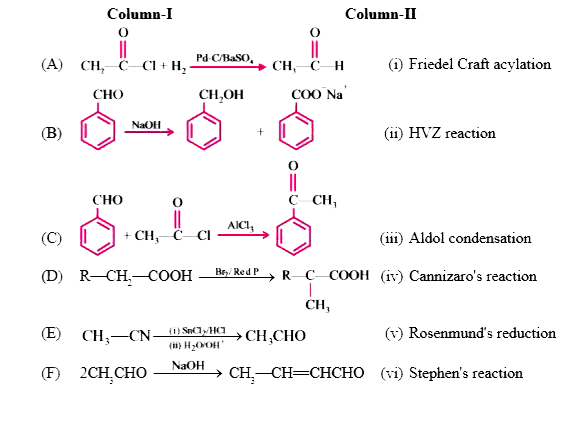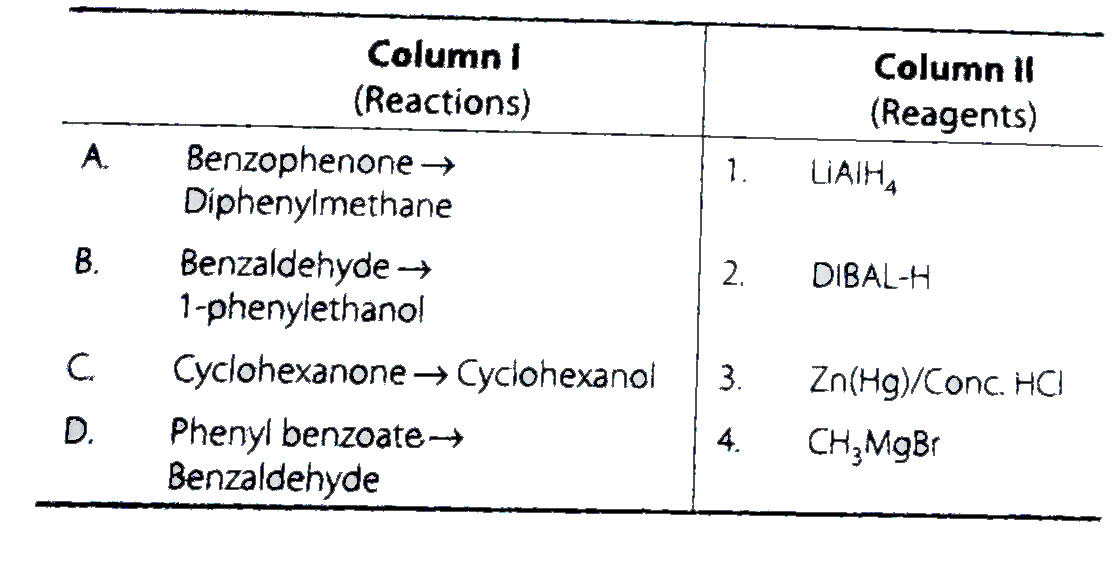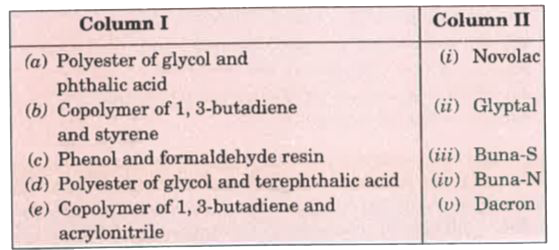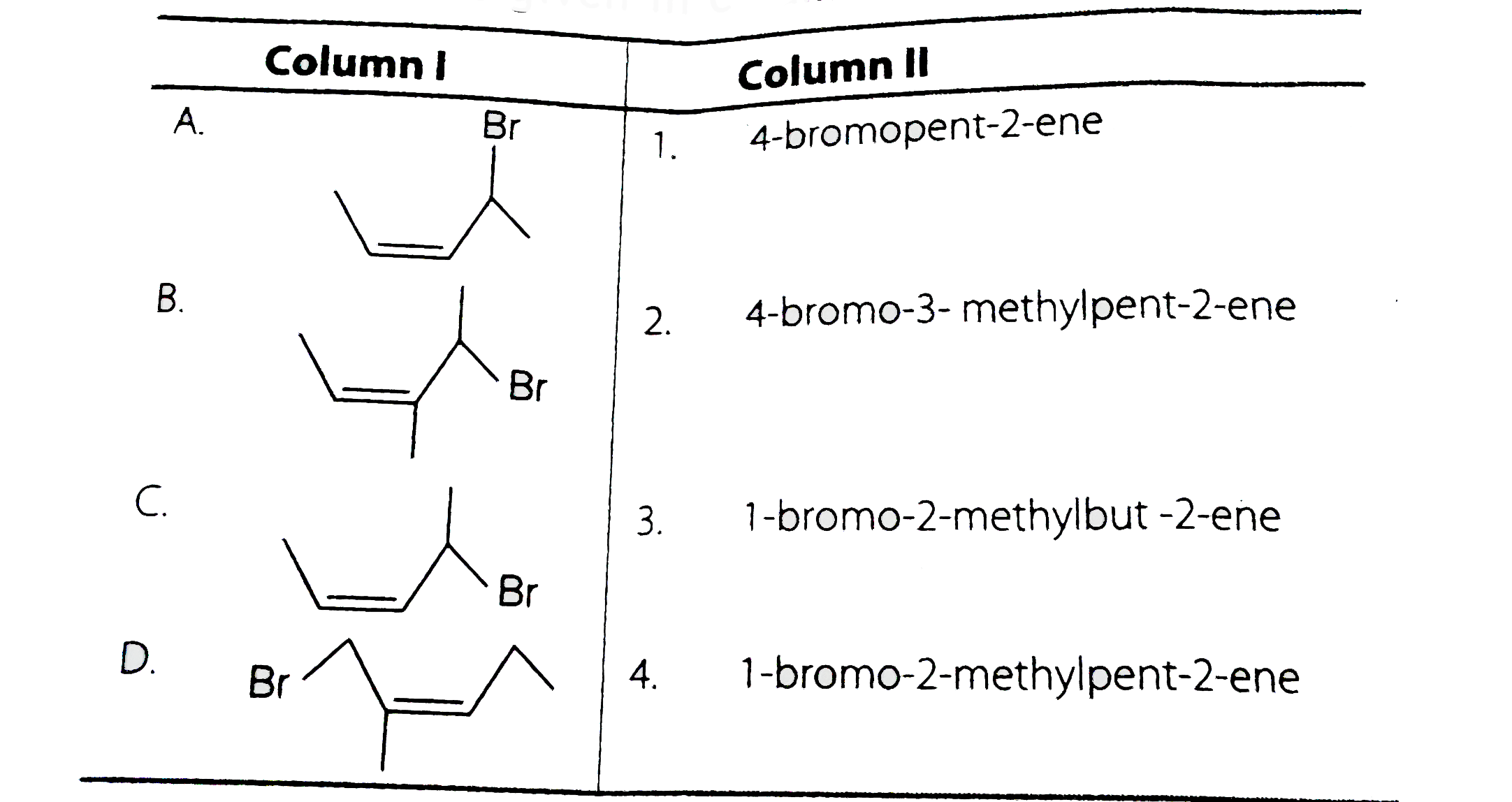Match the intermediates given in Column I with their probable structure in Column II

The correct Answer is:(a)-(i); (b)-(i), (c)-(ii)
Step by step video, text & image solution for Match the intermediates given in Column I with their probable structure in Column II by Chemistry experts to help you in doubts & scoring excellent marks in Class 11 exams.
Updated on:21/07/2023Topper's Solved these Questions
- ORGANIC CHEMISTRY - SOME BASIC PRINCIPLES & TECHNIOUESBOOK - DINESH PUBLICATIONCHAPTER - ORGANIC CHEMISTRY - SOME BASIC PRINCIPLES & TECHNIOUESEXERCISE - Assertion-Reason
17 Videos
- ORGANIC CHEMISTRY - SOME BASIC PRINCIPLES & TECHNIOUESBOOK - DINESH PUBLICATIONCHAPTER - ORGANIC CHEMISTRY - SOME BASIC PRINCIPLES & TECHNIOUESEXERCISE - MCQS
12 Videos
- ORGANIC CHEMISTRY - SOME BASIC PRINCIPLES & TECHNIOUESBOOK - DINESH PUBLICATIONCHAPTER - ORGANIC CHEMISTRY - SOME BASIC PRINCIPLES & TECHNIOUESEXERCISE - NCERT Exemplar Problems
22 Videos
- NUCLEAR AND RADIO CHEMISTRYBOOK - DINESH PUBLICATIONCHAPTER - NUCLEAR AND RADIO CHEMISTRYEXERCISE - Evaluate Yourself
45 Videos
- P BLOCK ELEMENTS (GROUP 13 AND 14 )BOOK - DINESH PUBLICATIONCHAPTER - P BLOCK ELEMENTS (GROUP 13 AND 14 )EXERCISE - Straight obj.
17 Videos
Similar Questions
Match the reactions given in Column I with the suitable reagents given in Column II.
 .
.
View SolutionMatch the reactions given in Column I with the suitable reagents given in Column II.

View SolutionMatch the statements given in Column I with the oxidation states given in Column II.

View SolutionMatch the reactions given in Column I with the types of reactions given in Column II.

View SolutionMatch the reactions given in Column I with the types of reactions given in Column II.

View SolutionMatch the polymers given in Column I with their commercial names given in Column II.

View SolutionMatch the reactions given in Column I with the types of reactions given in Column II.

View SolutionMatch the structures given in Column I with the names in Column II

View SolutionMatch the items given in Column I and Column II.
View SolutionMatch the items given in Column I and Column II.

View Solution
